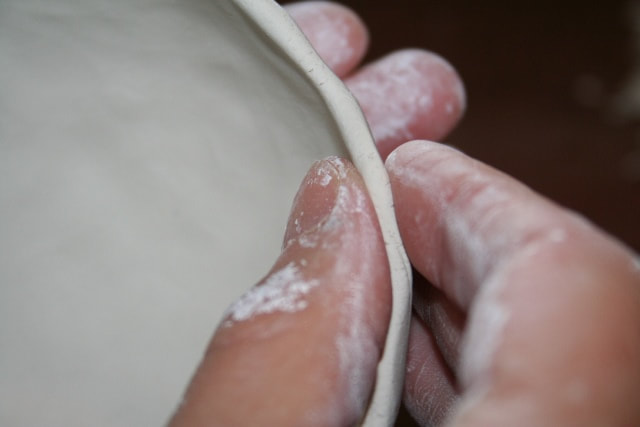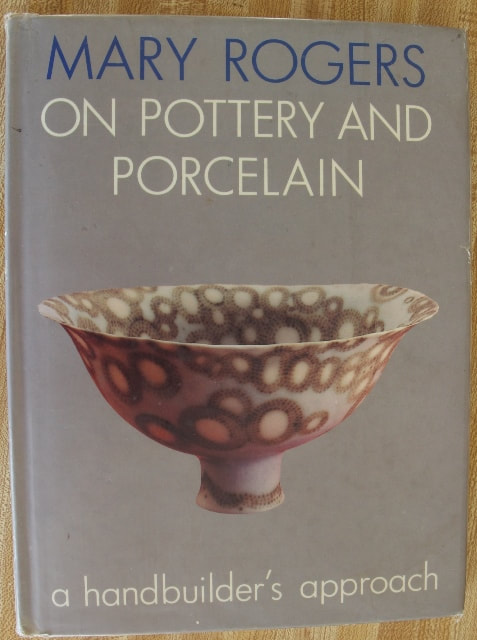|
Pinching is one of the oldest if not the oldest known clay techniques. It has always been a good place to start a first experience with clay, but for sure not a beginner’s technique. It is often mistaken to be the easiest technique in clay, because it is a logical place for potential potters to start working with it. The true fact though is that it takes a good bit of practice and skill to create even walls and to make a real piece of art from that small ball of clay in one’s hands. Most beginners do not create perfect pinch pots at first and teachers are often hasty to move them to the next phase and never make sure that they mastered the skill in full. In my opinion that is a mistake, because unless those potters – to - be decides to go back, explore and practice pinch pots, they will always live with the idea that they will never be good at that specific technique, or they will label it as a beginners technique. When clay is pressed between thumb, fore-and middle fingers it becomes more compact with every pinch, to make it into a very strong structured object. This is the most direct and often times the most effective way to manipulate clay. When clay is pressed between thumb, fore-and middle fingers it becomes more compact with every pinch, to make it into a very strong structured object. This is the most direct and often times the most effective way to manipulate clay. Pinching clay is one of the oldest techniques to manipulate clay. The first way Antoinette like to test the personality of a clay body, is by pinching. Experienced potters develop a rhythm in which they press firm and evenly all over the clay. As they get to the right thickness, the pinching becomes gentler. Pinching porcelain clay is one of the best ways to learn to understand and control the clay medium. Pinching and finishing porcelain pinch bowls can be a very rewarding experience. Here Antoinette is pushing the limits. Image by Koos Badenhorst Whether one pinch hard and deep into a piece of clay or whether one have a gentle soft, but firm approach will depend on the type of clay that the maker have in his hand and that reminds me of how often times I would test a new clay body by tearing a small piece of clay, the size of a small orange off and pinch it into a bowl in my hand. These porcelain pinch bowls are ready to be trimmed. Porcelain clay can be very thin and still be strong. Due to the glass-like quality of porcelain, the clay, fired to maturity, is stronger than any other clay. Antoinette is teaching this technique in her first porcelain e- course. Image by Koos Badenhorst Different types of clay will act differently and it will convey a message to the user of what it “wants to become” The way it forms little cracks on the side walls or rim, or stay smooth in the hand, show instant fingerprints or allows itself to be shaped into a smooth open vessel reveals and predicts the future relationship between clay body and potter. The way it tolerates ongoing handling or quickly gets tired of manipulation, the way it allows itself to be shaped and re shaped, the way it allows a finger to smear wet or semi - dry over its surface and finally how easy or difficult it is to finish it off and use different kinds of tools are all ways of telling the handler whether it is a clay body that suits his or her personality. Is it possible that a pinch pot can stand on its own as an AESTHETIC piece of art? The answer is without any doubt yes. Probably the most renowned potter of modern times that pinched perfect pots was the British potter Mary Rodgers. She describes her techniques in her book “Pottery and Porcelain”. Although she often worked with stoneware, her porcelain pieces were outstanding. Today few of these exquisite pieces are still available and if it is available, it sells at breathtaking prices. The cover of one of Antoinette's favorite porcelain books. Image by Koos Badenhorst I have often times created pinch pots from porcelain and must humbly admit that Mary Rodgers always was the inspiration behind my pinch pots. There is something about pinching that becomes a very personal way to express my passion for clay
2 Comments
Wow fascinating article and I wholly agree!
Reply
TOcker david
8/30/2021 04:09:46 pm
Reply
Leave a Reply. |
Blog
Categories
All
|








 RSS Feed
RSS Feed